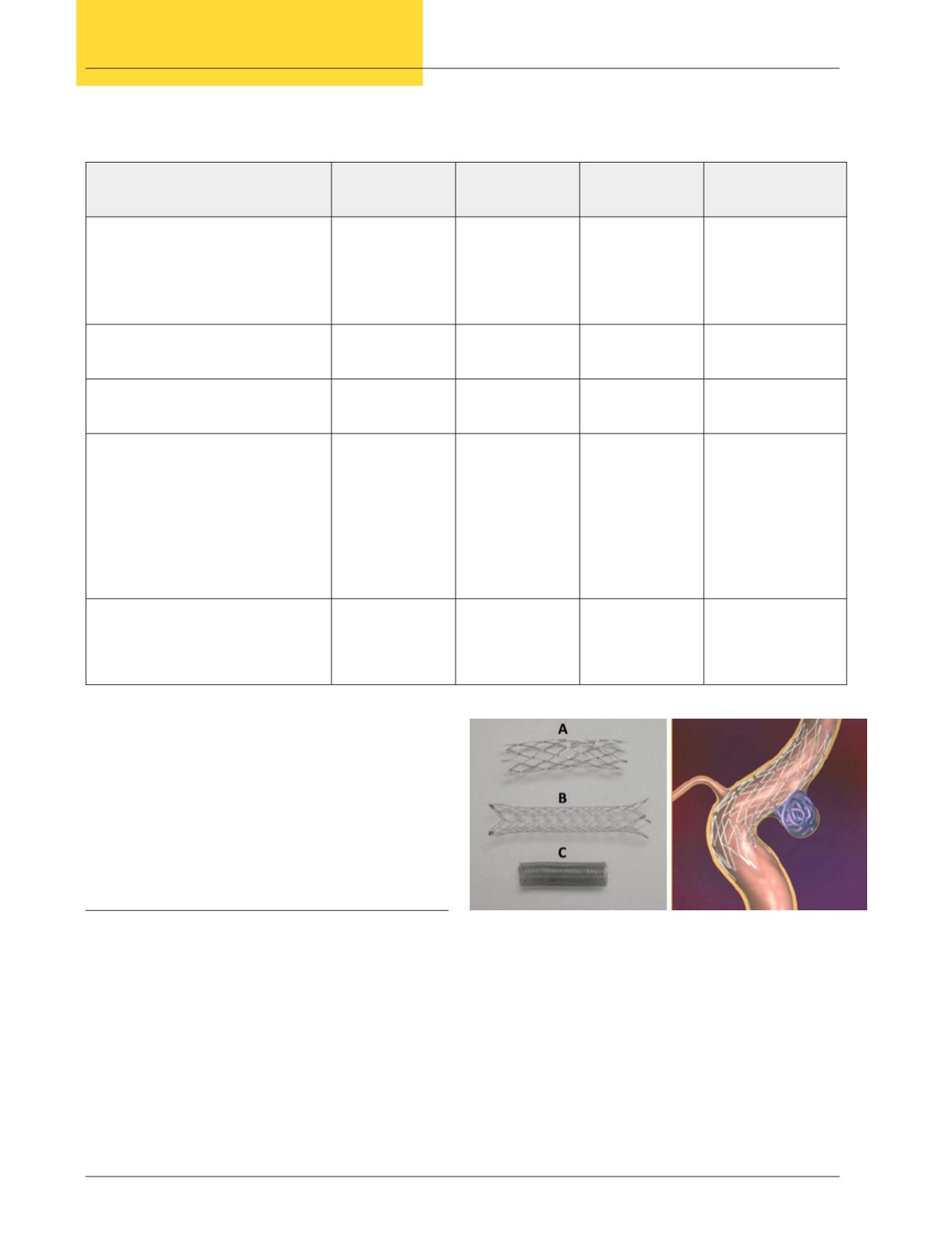
30
Vol. 66, No. 3 2015
Northeast Florida Medicine
Endovascular Neurosurgery
may prolapse into the parent artery immediately after balloon
deflation or the introduction of a new coil could displace a
previously detached coil from the aneurysm into the parent
vessel and cause thromboembolic complications.
Intracranial Stenting
The introduction of balloon-mounted stents and, later,
self-expanding stents in the late 1990s
12
and early 2000s
13
was
amajor milestone.These devices allowed treatment of fusiform
andverywide-necked lesions.Typically, fusiformaneurysms are
circumferential dilatations of the vessel wall and lack a neck.
Therefore, coil placement, evenwithaballoonremodeling tech-
nique, is practically impossible. Self-expanding stents provide
mechanicalsupporttosafelyintroduceembolizationcoilsinside
the aneurysm, virtually eliminating the risk of coil prolapse.
In addition, stents change flow dynamics allowing aneurysm
thrombosis. As experience with stent-assisted embolization
grew, operators shifted their focus fromendosaccular aneurysm
Figure 6:
Endoluminal devices revolutionized the treatment
of intracranial aneurysms. Intracranial stents (left A,B) enabled
physicians to treat complex and wide-neck aneurysms by securing
the embolization coils and allowing denser filling of the aneurysm
(right). Flow diverters were designed with a denser metallic mesh (left
C) and provide a higher metal coverage area in the vessel, disrupting
the inflow jet inside the aneurysm and redirecting blood flow along
the parent artery. This technology has offered a safe and durable
solution for some of the most difficult aneurysms which would have
previously required parent vessel sacrifice or intracranial bypass.
Authors (Year)
Number of Pa-
tients
Number of Aneu-
rysms
Mean Follow-up
(yrs)
Rate of Rupture
*ISUIA retrospective study (1998)
7
1449
1937
8.3
Group 1:
<10 mm: 0.05%/yr
≥10 mm: 1%/yr
Group 2:
<10 mm: 0.5%/yr
≥10 mm: 1%/yr
Rinkel (1998)
6
3907
N/A
N/A
Overall: 1.9%/yr
<10 mm: 0.7%/yr
≥10 mm: 4%/yr
Juvela (2001)
5
142
181
18.1
10.5% at 10 yrs
23% at 20 yrs
30.3% at 30 yrs
*ISUIA prospective study (2003)
8
1692
2686
4.1
Group 1:
<7 mm: 0%/yr
7-12 mm: 2.6%/yr
13-24 mm: 14.5%/yr
≥25 mm: 40%/yr
Group 2:
<7 mm: 2.5%/yr
7-12 mm: 14.5%/yr
13-24 mm: 18.4%/yr
≥25 mm: 50%/yr
#UCAS (2012)
4
5720
6697
11,660 aneu-
rysms-years
Overall: 0.95%/yr
5-6 mm: 1.13%/yr
7-9 mm: 3.35%/yr
10-24 mm: 9.09%/yr
≥25 mm: 76.26%/yr
*ISUIA – International Study of Unruptured
Intracranial Aneurysms
#UCAS – Unruptured Cerebral Aneurysm Study
N/A – Not available
Table 3.
Summary of Aneurysm Natural History Studies and Risk of Rupture


